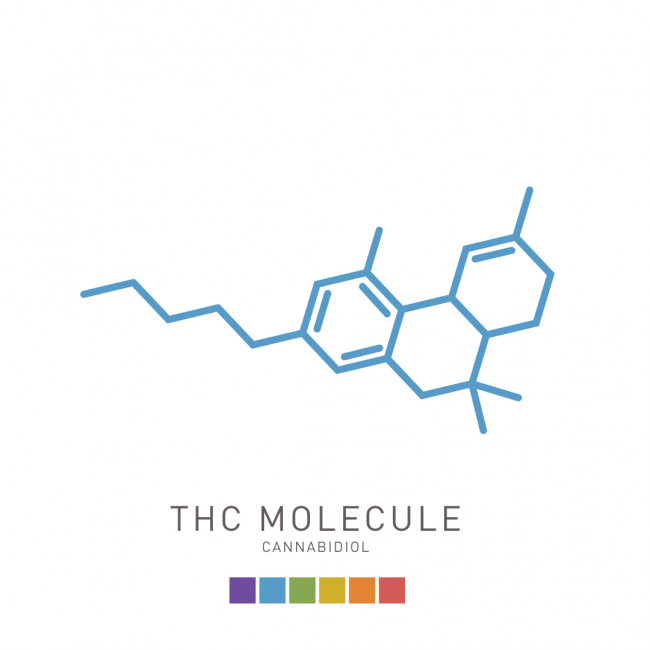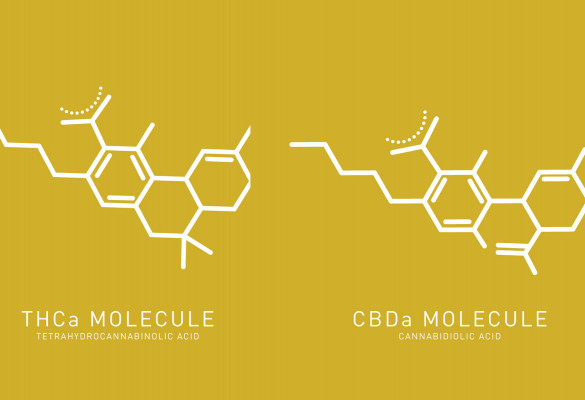The Cannabis sativa plant contains a multitude of chemical substances including cannabinoids, terpenes, and flavonoids. The most well-known cannabinoids in cannabis are delta-9-tetrahydrocannabinol (THC) and cannabidiol (CBD). Researchers have identified over 100 cannabinoids in the cannabis plant.1 In late 2019, Italian scientists identified two more cannabinoids: tetrahydrocannabiphorol (THCP) and cannabidiphorol (CBDP).2
Not all cannabinoids are present in large amounts in every strain – or cultivar – or in the products manufactured from cannabis or hemp plants. The more abundant cannabinoids are considered major cannabinoids while the less abundant cannabinoids are called minor cannabinoids.

While scientists refer to the cannabinoids that are most researched as the Big Six, some of those are much less plentiful in cannabis plants and products so are actually “minor cannabinoids” such as CBG, CBN and THCv. Here are the Big Six cannabinoids:
- THC - Tetrahydrocannabinol - Major in most common cultivars or strains
- CBD - Cannabidiol - Major in some cultivars or strains
- CBG - Cannabigerol - Major in some cultivars or strains
- CBN - Cannabinol - Minor
- CBC - Cannabichromene - Minor
- THCv - Tetrahydrocannabivarin - Minor
Certain cultivars or strains of the cannabis plant can be cultivated specifically to enhance the concentration of minor cannabinoids. For example, cultivators claim that a cultivar called Doug’s Varin contains an abundant amount of THCv, more so than most other cultivars.

Major and minor cannabinoids are formed through specific processes within and outside of the cannabis plant. All cannabinoids start with CBGa, a chemical compound in an acid form, also referred to as the “Mother Cannabinoid.” Through a chemical process in the cannabis plant, CBGa is converted into the acid forms of Delta-9-THC, CBD, and CBC which are called THCa, CBDa, and CBCa.
To convert the acid forms into active cannabinoids, heat or UV must be used. Heat can come from artificial lights or sunlight. When people combust or warm cannabis plant matter or concentrated oils extracted from the cannabis plant, they are changing the acid THCa to the active form of THC. Combusting or warming cannabis causes a process called decarboxylation or “decarbing” and the resulting cannabinoids from THCa, CBDa and CBCa are THC, CBD and CBC with THC and CBD typically being the most prevalent.3 UV light can also initiative decarboxylation.
Aging and exposure to the elements, such as light and air, also contribute to converting cannabinoids into different forms. The most common example is how through aging and exposure outside of the plant itself, THC can convert into CBN, another minor cannabinoid. THC can also convert to the minor cannabinoid, Delta-8-THC, which in turn can convert into CBN.4
While a great deal of attention is placed on THC and CBD, minor cannabinoids also contribute to the way cannabis interacts with human bodies and brains. Also, the various cannabinoids can interact with one another and modify the resulting effects.
More research is needed to understand the effects of minor cannabinoids. To this end, in 2019 the National Institute of Health provided almost $3 million dollars in research awards to look into minor cannabinoids as analgesics and for specific pain such as neuropathic pain and arthritic pain.5
Sources
- Evolution of the Cannabinoid and Terpene Content during the Growth of Cannabis sativa Plants from Different Chemotypes (Journal of Natural Products)
- A novel phytocannabinoid isolated from Cannabis sativa L. with an in vivo cannabimimetic activity higher than Δ9-tetrahydrocannabinol: Δ9-Tetrahydrocannabiphorol (Nature)
- Biosynthesis of Cannabinoid Acids (Phytochemistry)
- Chemistry of Cannabis: Development & Modification of Bioactivity (Comprehensive Natural Products II)
- NIH to investigate minor cannabinoids and terpenes for potential pain-relieving properties (NIH Press Release)
